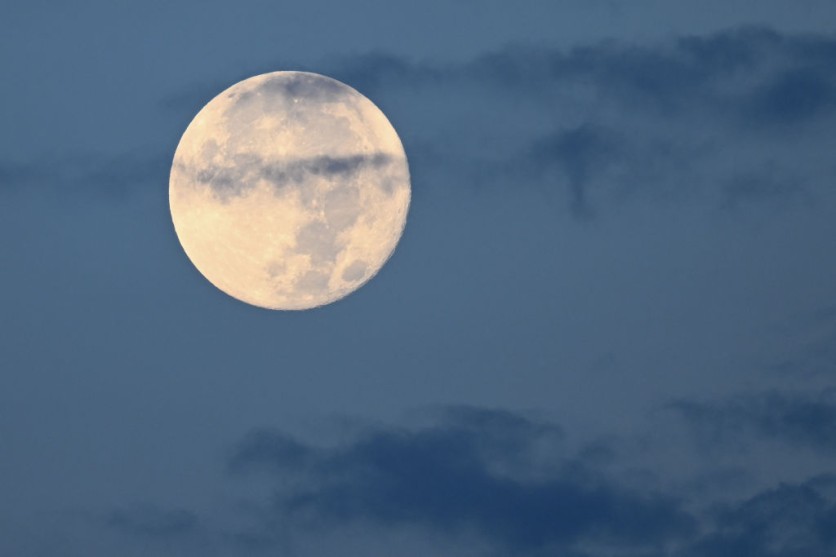A rare celestial trifecta will happen on the night of August 30, when a convergence of three celestial events promises an exceptional treat for astronomy buffs. This enthralling cosmic moment, which includes a Supermoon, will surely captivate stargazers and astronomy enthusiasts alike.

Celestial Alignment
The upcoming full Moon on August 30, 2023, is going to be truly extraordinary for three reasons. According to Interesting Engineering, there will be a Supermoon, and it will be a Blue Moon, plus the majestic planet of Saturn will also appear near it.
As detailed in NASA's recent publication, this impending phenomenon holds a special allure. On the said night, precisely at 9:36 p.m. EDT, the full moon will radiate in opposition to the Sun, casting its luminous glow.
Adding to the spectacle, Saturn, reaching the zenith of its proximity and brilliance for the year, will grace the scene in proximity to the moon.
This awe-inspiring spectacle begins as early as 8:42 p.m. EDT, with Saturn positioned about 5 degrees to the upper right of the moon, initiating a captivating visual journey.
Throughout the evening, Saturn will appear to embark on a clockwise trajectory around the moon, a rare phenomenon that celestial enthusiasts and stargazers will undoubtedly cherish.
Spanning an impressive duration of three full days, from Tuesday night until Friday morning, the presence of this unique moon is set to captivate observers.
The tapestry of stars and the planet Saturn will gracefully traverse the night sky towards the western expanse with each passing evening, a phenomenon orchestrated by Earth's orbital dance around the Sun.
Meanwhile, the planet Mars, a steadfast presence on the western horizon, will embark on a more gradual celestial journey, adding to the visual splendor.
Unveiling Supermoon, Blue Moon
A Supermoon unfolds when the moon is in closest proximity to Earth (perigee) while the moon is full during its normal orbit. During this celestial event, the moon will appear about seven percent larger and will shine a bit brighter than average.
According to the Royal Museums of Greenwich, this full moon will be the second full moon in August, making it a Blue Moon. Intriguingly, the term "blue" does not allude to the moon's color, as it retains its customary appearance.
The terminology is unrelated to the moon's visual attributes and is a fascinating example of celestial language. In a fascinating interplay, NASA highlights the synchronization of this unique moon with significant festivities across diverse cultural calendars.
NASA noted that this full moon will appear in the middle of the seventh month of the Chinese calendar, Safar in the Islamic calendar, and Elul in the Hebrew calendar. Elul is a time for self-reflection and evaluation in preparation for the High Holy Days of Rosh Hashanah and Yom Kippur.
This full moon also corresponds with the Hindu festival Raksha Bandhan. Also called Rakhi or Rakhi Purnima, this event celebrates the brothers and sisters' profound bond.
The alignment of these celestial events to cultural celebrations forges a bridge between the luminous realms above and the cherished bonds that bind us on Earth.
NASA said this "moon will appear full for three days around the time of the full moon, from Tuesday night to Friday morning."
Related Article : How to Photograph the August 2023 Supermoons Like a Pro Using Only Your Smartphone

![Apple Watch Series 10 [GPS 42mm]](https://d.techtimes.com/en/full/453899/apple-watch-series-10-gps-42mm.jpg?w=184&h=103&f=9fb3c2ea2db928c663d1d2eadbcb3e52)



